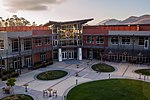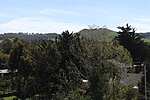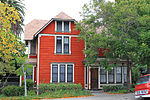San Luis Obispo County Regional Airport
Airfields of the United States Army Air Forces in CaliforniaAirports established in 1939Airports in San Luis Obispo County, CaliforniaBuildings and structures in San Luis Obispo, CaliforniaCounty airports in California ... and 1 more
Formerly Used Defense Sites in California

San Luis Obispo County Regional Airport (IATA: SBP, ICAO: KSBP, FAA LID: SBP), McChesney Field is a civil airport near San Luis Obispo, California, United States. Three passenger airlines serve the airport with nonstop flights to eight cities: Dallas-Fort Worth, Denver, Los Angeles, Phoenix, Portland, San Diego, San Francisco and Seattle. The airport was established in 1939 and used by the U.S. military between 1939 and 1945.
Excerpt from the Wikipedia article San Luis Obispo County Regional Airport (License: CC BY-SA 3.0, Authors, Images).San Luis Obispo County Regional Airport
Airport Drive, San Luis Obispo
Geographical coordinates (GPS) Address Website External links Nearby Places Show on map
Geographical coordinates (GPS)
| Latitude | Longitude |
|---|---|
| N 35.236944444444 ° | E -120.64194444444 ° |
Address
San Luis Obispo Regional Airport (McChesney Field)
Airport Drive 975
93401 San Luis Obispo
California, United States
Open on Google Maps










